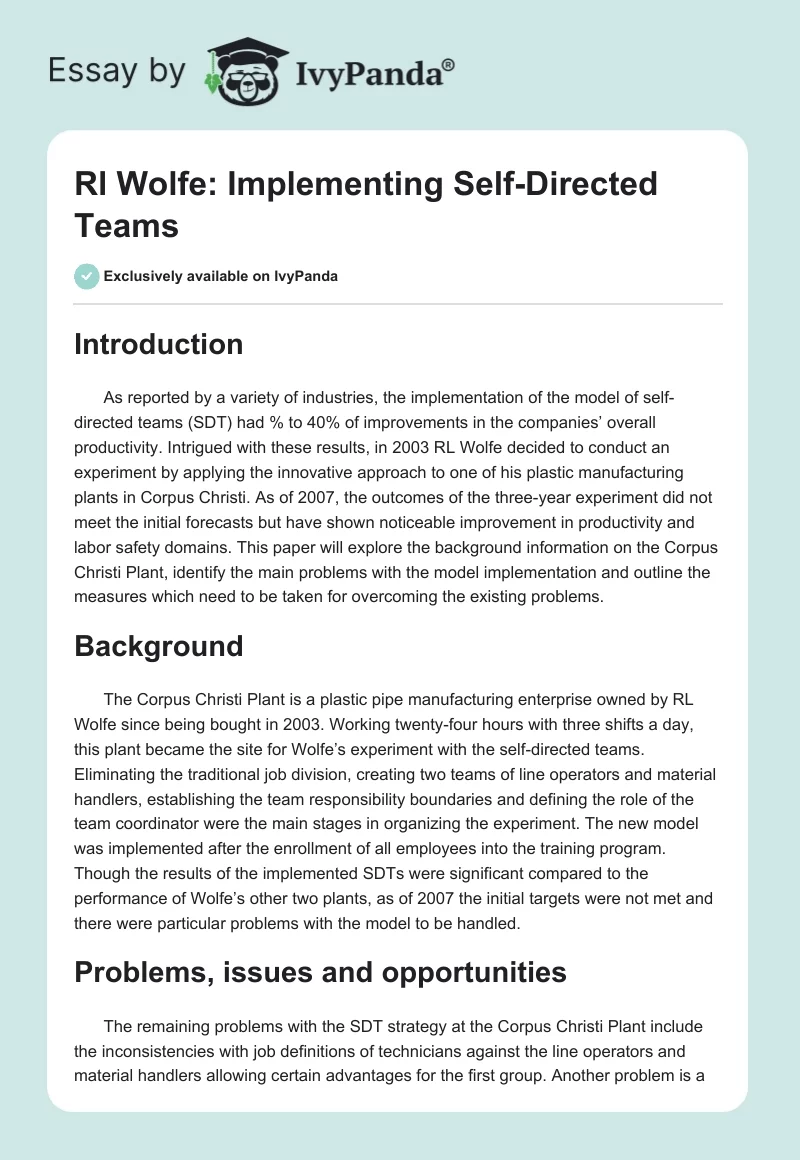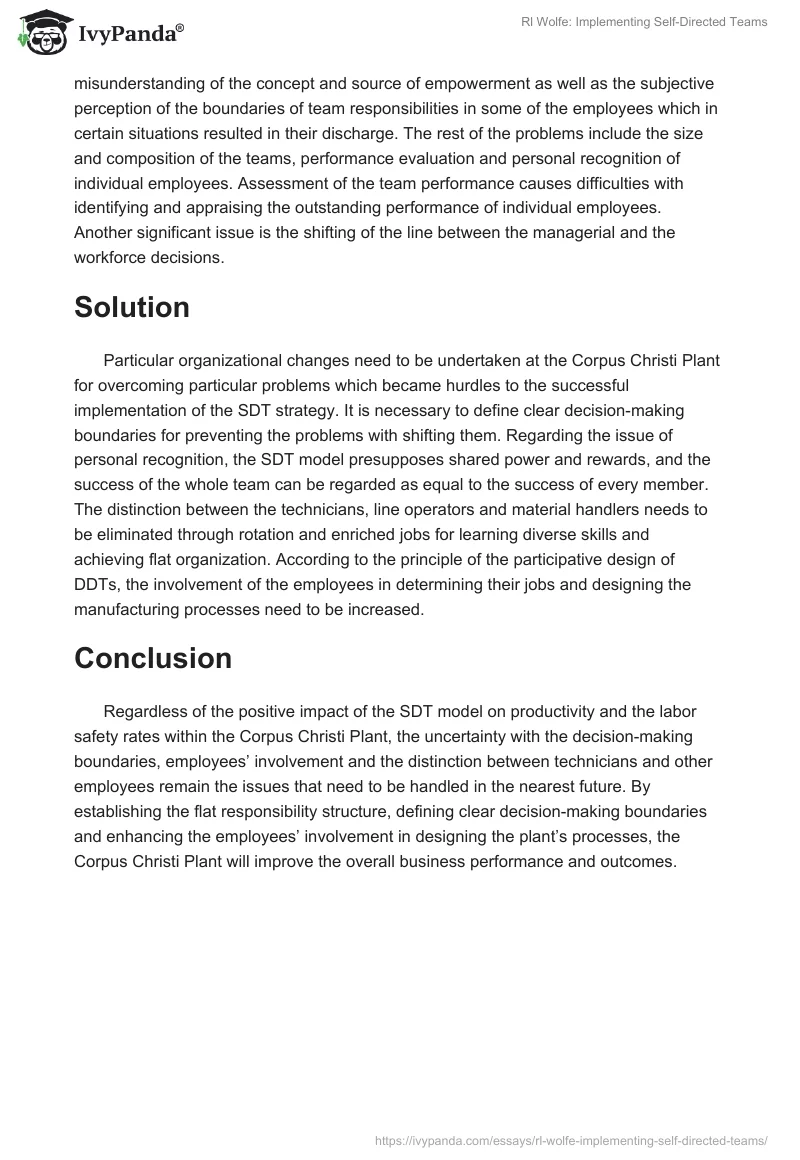Introduction
As reported by a variety of industries, the implementation of the model of self-directed teams (SDT) had % to 40% of improvements in the companies’ overall productivity. Intrigued with these results, in 2003 RL Wolfe decided to conduct an experiment by applying the innovative approach to one of his plastic manufacturing plants in Corpus Christi. As of 2007, the outcomes of the three-year experiment did not meet the initial forecasts but have shown noticeable improvement in productivity and labor safety domains. This paper will explore the background information on the Corpus Christi Plant, identify the main problems with the model implementation and outline the measures which need to be taken for overcoming the existing problems.
Background
The Corpus Christi Plant is a plastic pipe manufacturing enterprise owned by RL Wolfe since being bought in 2003. Working twenty-four hours with three shifts a day, this plant became the site for Wolfe’s experiment with the self-directed teams. Eliminating the traditional job division, creating two teams of line operators and material handlers, establishing the team responsibility boundaries and defining the role of the team coordinator were the main stages in organizing the experiment. The new model was implemented after the enrollment of all employees into the training program. Though the results of the implemented SDTs were significant compared to the performance of Wolfe’s other two plants, as of 2007 the initial targets were not met and there were particular problems with the model to be handled.
Problems, issues and opportunities
The remaining problems with the SDT strategy at the Corpus Christi Plant include the inconsistencies with job definitions of technicians against the line operators and material handlers allowing certain advantages for the first group. Another problem is a misunderstanding of the concept and source of empowerment as well as the subjective perception of the boundaries of team responsibilities in some of the employees which in certain situations resulted in their discharge. The rest of the problems include the size and composition of the teams, performance evaluation and personal recognition of individual employees. Assessment of the team performance causes difficulties with identifying and appraising the outstanding performance of individual employees. Another significant issue is the shifting of the line between the managerial and the workforce decisions.
Solution
Particular organizational changes need to be undertaken at the Corpus Christi Plant for overcoming particular problems which became hurdles to the successful implementation of the SDT strategy. It is necessary to define clear decision-making boundaries for preventing the problems with shifting them. Regarding the issue of personal recognition, the SDT model presupposes shared power and rewards, and the success of the whole team can be regarded as equal to the success of every member. The distinction between the technicians, line operators and material handlers needs to be eliminated through rotation and enriched jobs for learning diverse skills and achieving flat organization. According to the principle of the participative design of DDTs, the involvement of the employees in determining their jobs and designing the manufacturing processes need to be increased.
Conclusion
Regardless of the positive impact of the SDT model on productivity and the labor safety rates within the Corpus Christi Plant, the uncertainty with the decision-making boundaries, employees’ involvement and the distinction between technicians and other employees remain the issues that need to be handled in the nearest future. By establishing the flat responsibility structure, defining clear decision-making boundaries and enhancing the employees’ involvement in designing the plant’s processes, the Corpus Christi Plant will improve the overall business performance and outcomes.


